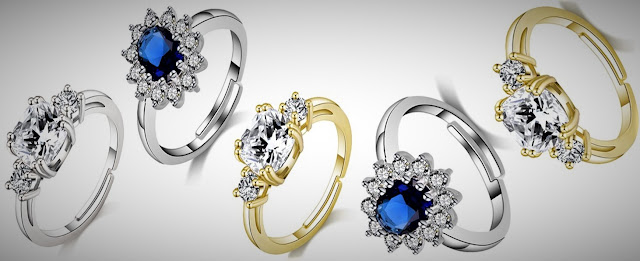The distinction among gold and jewels
Jewels are perpetually and gold is valuable, however which one is more extraordinary? What's more does this extraordinariness have a say in the value we find in adornments stores?
Clearly, the response isn't so natural as you might suspect.
"Gold is a weighty metal, an intriguing earth component, framed in crashes of neutron stars," says Earth researcher and MIT teacher Ulrich Faul.
"During the arrangement of the Earth, heavier components were drawn in towards the Earth's center, and that really intends that close to the Earth's outside it is hard to track down the heavier components close to the Earth's covering," says Yana Fedortchouk, teacher of Earth sciences and partner overseer of the Experimental Hyperbaric Geological Research Laboratory at Dalhousie University in Halifax, Nova Scotia, Canada. Tracking down enormous amounts of gold.
You can observe it even in low fixations. It's present in a wide assortment of rocks in the covering, Fedorchuk told Live Science, "however to make a supply, it needs to arrive at certain focuses to make mining financially reasonable."
As indicated by Fedorchuk, the normal centralization of gold in the Earth's hull is "extremely, low", around 4 sections for each billion.
She added that to deliver any grouping of gold that could have a market esteem, the put away gold would need to be in excess of multiple times concentrated.
Then again, jewels are framed under high tension from an exceptionally normal component, carbon.
In its uncompressed structure, it is known as graphite, which is the material found in pencils.
Contrasted with gold, the normal carbon focus in the Earth's outside layer is around 200,000 sections for each billion.
As indicated by the book (Elsevier Science Ltd., 1978) composed by geologist William Fyfe: "The significance of liquids lies in transformative, structural, and substance transport processes."
In this manner, the uncommonness of jewels doesn't have anything to do with its essential piece. Rather, the change of normal carbon into precious stones that can be made is an extremely arduous and seldom effective interaction.
Jewels can frame in the Earth's mantle, some way or another can be mined to the surface, or they can shape during a shooting star sway, however those precious stones are never gemstones and are tiny in size, Fedorchuk said.
The mantle is the layer under the Earth's covering.
Jewels structure somewhere down in the Earth's mantle and can be separated from profound residue or those pushed up through sluggish stone inspire during the mountain-shaping interaction.
Notwithstanding, during a time of slow ascent - transformation to graphite - precious stone transforms into graphite, which makes it never conceivable to ascend to the surface like gemstones.
The equation expected to frame jewels relies upon profundity, temperature and tension. Carbon is covered no less than 150 kilometers beneath the Earth's surface and afterward warmed to around 1,204 degrees Celsius, under about 725,000 pounds of strain for each square inch (5 billion Pa).
It is immediately brought to the surface by a volcanic emission to cool.
This extraordinary interaction makes normal burnable precious stones much more uncommon than gold.
With this, carbon is one of the most bountiful components on Earth, particularly when contrasted with weighty metals like gold, and just precious stones are made of carbon put under enormous strain.
The creation of engineered jewels confuses the issue more than it is muddled.
Researchers can reproduce the circumstances that are important to accommodate the change of graphite into precious stone in the lab, so a volcanic ejection doesn't need to happen, and yet it is unimaginable to expect to apply this to gold, the old science is as yet poor tragically!
Albeit made jewels have similar regular arrangements, they are typically sold 30% less expensive than normal precious stones on the lookout, and this is on the grounds that they are viewed as of low worth.
Be that as it may, does the simple presence of lab-made precious stones make the pearl more famous than we anticipated? Voll demands this reality, saying: "Jewels for the situation that are under a specific size are not worth mining in any case."
Who needs to purchase a precious stone that needs an amplifying glass to be noticeable?
Gold is more plentiful than enormous size precious stones, yet with jewels being a piece of the material it isn't especially intriguing.
I consider part the jewel's prominence is because of the astonishing social connections!


Comments
Post a Comment